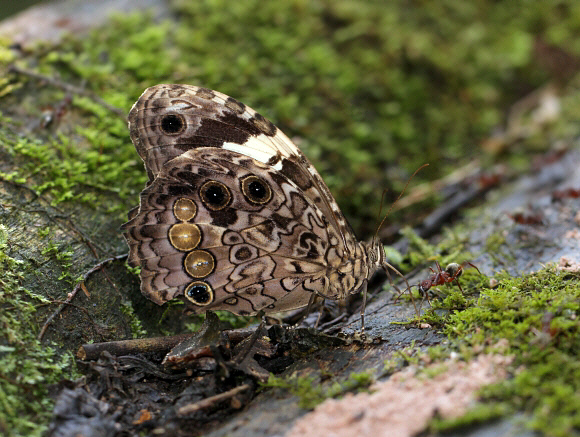
Introduction
There are 1100 known species of Satyrinae in the neotropical region. The systematic placement of Manataria within the Satyrinae was for many years very uncertain. Lamas took the first step in 2004 when he placed it in the subtribe Parargina, considering it to be closely allied to the European genera Pararge, Lasiommata and Kirinia, and the Oriental Lethe. In 2006 Wahlberg, Peña et al published the results of a DNA sequence analysis of the higher level phylogeny of Satyrine butterflies, resulting in the transferral of Manataria to the tribe Melanitini, and thereby recognising it as a close relative of the African Gnophodes and Oriental Melanitis Evening Browns.
The genus Manataria comprises of a single species hercyna, which is distributed across most tropical and subtropical regions of Central America and South America, from Mexico to Bolivia.

Habitats
This butterfly is migratory, and consequently can be found in a diverse range of habitats including lowland primary rainforest, deciduous forest, cloudforest, puna grasslands, cattle pastures and urban environments. It has been recorded at all elevations between 0-2800m.
Lifecycle
The larval foodplant is reported to be Chusquea but in view of the relationship between Manataria and Melanitis it seems more likely that grasses are used.
Adult behaviour
The butterflies are crepuscular / nocturnal in behaviour, and most commonly seen when they enter houses at night, or when attracted to moth traps. At dusk they can be attracted to rotting plantain or to shrimp paste bait. Despite being a common species, they are nearly always seen singly.

